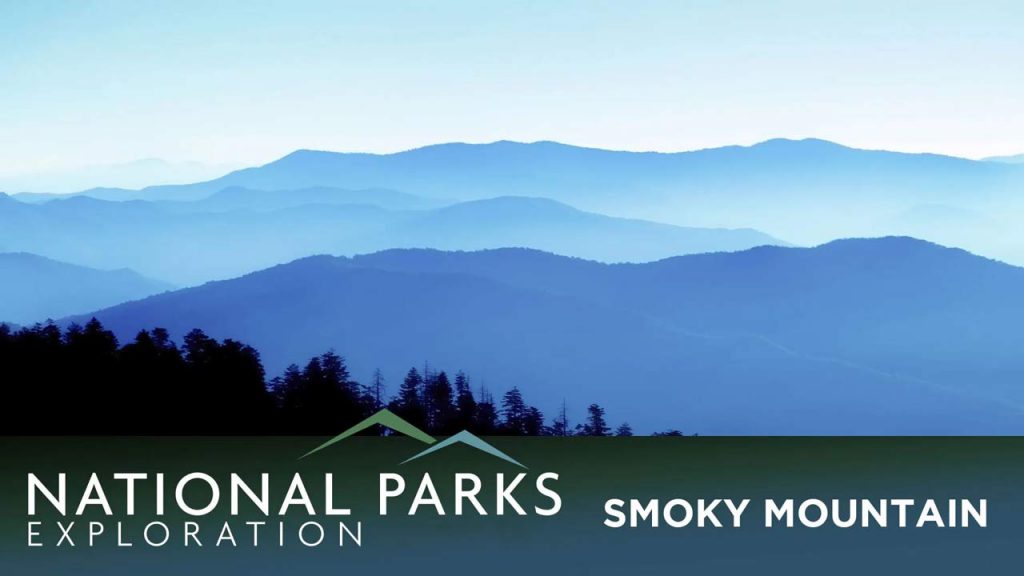Great Smoky Mountains National Park covers over 500,000 acres of breath-taking beauty – lush highland meadows, glorious waterfalls, pristine mountain streams and the highest mountain tops in the Appalachians, and to crown it all, it encompasses one of the most biologically diverse ecosystems in the world.
Great Smoky Mountain National Park rests in the geographic province known as the Blue Ridge Mountains, named for their distinctive blue appearance when seen from a distance. Ridge upon ridge of forest straddles the border between North Carolina and Tennessee in Great Smoky Mountains National Park. World renowned for its diversity of plant and animal life, the beauty of its ancient mountains, and the quality of its remnants of Southern Appalachian mountain culture, this is America’s most visited national park.
Great Smoky Mountains National Park
Great Smoky Mountains National Park is a United States National Park and UNESCO World Heritage Site that straddles the ridgeline of the Great Smoky Mountains, part of the Blue Ridge Mountains, which are a division of the larger Appalachian Mountain chain. It is located along the border between Tennessee and North Carolina, and is the most visited national park in the United States, with over 12.5 million visitors annually.
The park is known for its stunning natural beauty, including its diverse plant and animal life, as well as its rich cultural history. It is home to a wide variety of species, including black bear, elk, white-tailed deer, and over 1,500 species of wildflowers. The park also has a number of historic structures and landmarks, including log cabins, grist mills, and churches that date back to the early 19th century. There are a number of activities to enjoy in the park, including hiking, fishing, picnicking, and wildlife viewing. There are also several scenic drives that offer breathtaking views of the surrounding mountains. The park is open year-round, although some areas may be closed due to weather or maintenance.
For thousands of years, this region was occupied by successive cultures of indigenous peoples. The historic Cherokee had their homeland here, and occupied numerous towns in the river valleys on both sides of the Appalachian Mountains. Their first encounters with Europeans were as traders, mostly coming from the colonial Carolinas and Virginia.
European Americans did not begin to settle here until the late 18th and early 19th centuries. Particularly because of their pressure to acquire land in the Deep South, in 1830 President Andrew Jackson signed the Indian Removal Act, beginning the process that eventually resulted in the forced removal of all Indian tribes east of the Mississippi River to Indian Territory (now Oklahoma).
Most of the Cherokee were also removed. For a period some, led by such warriors as Tsali, evaded removal by staying in the area now part of the Great Smoky Mountains National Park. A band on the Oconaluftee River acquired land and also remained. Their descendants make up most of the federally recognized Eastern Band of Cherokee Indians, based in Cherokee, North Carolina, and their Qualla Boundary reserve to the south of the park.
John Mingus, who built the Mingus Mill, and Ralph Hughes settled on the Oconaluftee in 1795. Other settlers soon followed and began clearing land and farming. In 1818, John Oliver and his family were the first white settlers to move into Cades Cove. After 1821, more families settled in Cades Cove including the Jobes, Gregorys, Sparkes, and Cables. As the community began to grow, the Cades Cove Baptist Church was established in 1827.
As white settlers arrived, entrepreneurs developed logging as a major industry in the mountains. The Little River Railroad was constructed by Colonel W. B. Townsend in the late-19th century to haul timber out of the remote regions of the area. Colonel Townsend had purchased 86,000 acres of land on the Little River. The construction of the Little River Railroad set an example for larger companies like the Ritter Lumber Company, Montvale Timber Company, and Norwood Lumber to also purchase acres of land for logging. The logging company Champion purchased 92,000 acres (37,000 ha) of land which included the Greenbrier Cove area and areas from Clingman’s Dome to Mount Kephart. By 1909 logging was at its peak and by 1920 about two-thirds of the Great Smoky Mountains National Park area had been logged or burned by fires from logging operations.




